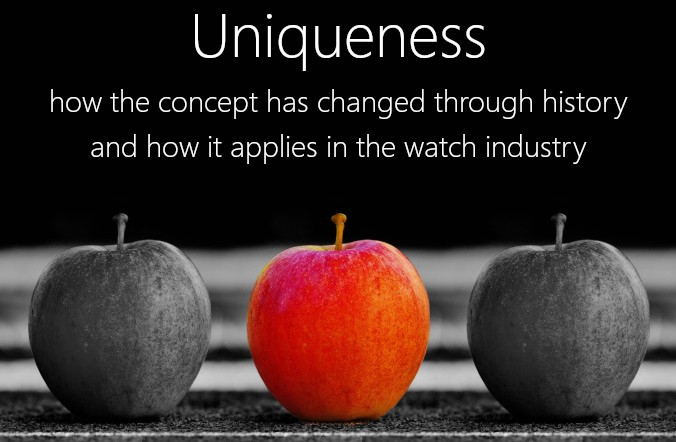
Introduction
Uniqueness, individuality, and being different are important to a lot of people these days.
This article explores how there was less individuality in the past, how and why that has changed over time, how it relates to luxury, to the arts, and to the watch industry.
Our brand slogan is “Celebrate your Uniqueness”. At the end of the article we’ll see the good reasons for us using that slogan.
We’ll cover the following topics:
- Uniqueness, the individual, and society
- Civilization and being different
- Luxury and uniqueness
- The arts and individuality
- Uniqueness in the watch industry
Uniqueness, the individual, and society
Humans mostly function in groups.

This is fundamental to our biological nature, obvious for hunter-gatherers who could hunt bigger prey by working together and rely on the rest of the group continually gathering food while specialist hunting parties occasionally brought large amounts of protein for the tribe.
Most people who think of themselves as very individual and non-conformist today, are still very fundamentally functioning due to what’s provided by society in the modern world, which includes, more than ever before, the opportunity to be different and express uniqueness, while still having the huge advantages that modern society brings (I’ll go into more detail about those, below).
Historical evolution of group membership.
The nature of the groups that people are members of has changed a lot through history.
For hunter-gatherers and agrarian societies, the main group, essential for survival, was their tribe. There would be some trade, or raiding and wars, with other local tribes.

While there were a few individuals who traveled widely, such as the wealthy young man from the Mediterranean, buried around 1,550 B.C. near Stonehenge, and some trade goods from the East arriving in Europe even earlier than that, most people remained in their local area their whole lives.
Things hadn’t changed all that much for some people, even relatively recently. I remember in my youth (the 1970’s), while on vacation in rural England, hearing that one of the men in the village had never been as far as the next village which is a two hour walk away.
As history progressed to feudal societies, the groups that most people interacted with, became somewhat larger, with a lord sharing some news from other regions, and sometimes needing his serfs to travel off to war against other regions or countries, and trade was becoming more common.

During the industrial revolution, a lot of people moved to towns or cities, sometimes living away from family, specializing and learning from other specialists, interacting with colleagues and people at other levels, and hearing daily news from the whole country and the world.
A specialist in any area of expertise was a lot more individual than a general farm worker (which most people had been a generation before). This meant membership of a small group of specialists, as well as having some degree of interactions with much larger groups due to dramatic improvements in communications and media.
Contemporary individuality.

These days, the groups that most people interact with are much more varied than in the past. Most people are on social media, often being part of global sub-cultures and areas of interest, traveling to other countries at least once a year and being in contact with a lot of groups of various sizes through various media and in person.
The range of what is available has broadened hugely, even in just the last few decades. For example, not many years ago the most expensive hi-fi sound system available was around $3,000. Now one can buy just one single phono cable for over $10,000, and there are plenty of ways to spend six figures or even seven on a hi-fi system.
The same is true of the multitudinous and minutely differentiated sub-cultures which most people are part of. Often what people call “being individual” actually means having strongly involved membership of a small sub-culture which is obviously different from other sub-cultures they interact with in the rest of their daily life. More on that below.
Most people have a strong need for membership and believing passionately in something. As traditional religions are experiencing declining membership, it is observable that people usually find themselves believing in something else, whether it be nationalism, opinions about the climate, or something else, with the same “religious” fervor.
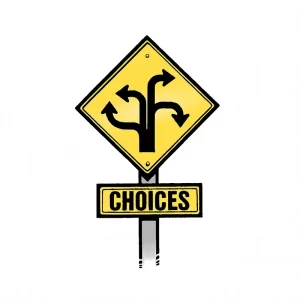
While such people might like to think that their beliefs are chosen from their own free personal decisions, in reality one doesn’t observe a multitude of unique and unrelated belief-systems, one for each individual. The observable reality is that belief is determined mostly at the group level, and the “free choice” is of which groups to be a member of, although there are a few people having an apparently significant role in forming new groups (more on how groups really work, below).
Being different (sort-of).
In the book “Hello, I’m Special: How Individuality Became the New Conformity” the author Hal Niedzviecki found that trying to be non-conformist was actually a new form of conformity, since a lot of other people were trying to do that too. Uniqueness is trendy.
It is now much more acceptable to be “different” (which almost always means being a member of a relatively small sub-culture), to have a little more self-determinism, and freedom, within the context of one’s survival, comfort and enjoyment of life being almost entirely determined by society.
Increased freedom naturally results in increased differences between different people. When conducting research to try to show that more freedom would result in everyone being more similar, the researchers determined that the Scandinavian countries had more apparent freedom (although, of course, higher tax, so this “freedom” is really mostly about exchanging one form of limitation for another), and were surprised to find that the increased freedom actually resulted in more (rather than less) differences between different people.

For example, when given more freedom of career choice (when there is influence from others trying to their bias their choices), even fewer women choose careers in engineering. Giving people the opportunity to be more unique and individual, tends to result in people being more different to each other, or, to be more precise, forming a wider range of different sub-groups.
These changes through history have been mirrored in changes to how society views its members. Societies have moved towards granting equal rights to their members, while also allowing and contributing to a wider range of possible choices and opportunities.
There can be a lot of tension between being different and fitting in. People want to be seen as being different, and tend to think of themselves as being different, while, in reality acting as members of sub-groups, and finding people who are different in the same way they are.
For example, as an artist creating paintings for greetings-cards, I met a sales-rep for the greetings-card company I was painting for. He told me that, for Christmas cards, retailers will say that the want something “completely different”, while in reality wanting something a few percent different . . . just different enough to not be exactly the same as last year, but mostly determined by the same subconscious influences that are automatically accepted in a society, and only slowly evolve.
Another artist told me a very similar story . . . he was commissioned by a business to draw their company Christmas card design. They said that what they wanted was something totally new, nothing like their previous cards. So he drew something new. Their response was “where’s the polar bear? We always have a polar bear on our Christmas cards!”. By the end of several rounds of changes, what they really wanted was something almost identical to their previous cards, just barely different enough to be able to be justifiable as “different”.
See below for an example of how dramatic the results of fitting in or being genuinely different, can be.
We’ll also look at how all this relates to the evolution of the arts (and then watch brands), in later sections of this article.
Civilization and being different

Civilization can be seen as a set of limitations. These include laws as well as social norms (acceptable behavior), and come with huge benefits.
For example, the decrease in violence resulting from an increase in degree of civilization, is dramatic.
Violent deaths of all types have decreased from about 500 per 100,000 before the middle ages, to around 7 per 100,000 now. That’s a huge change. To put it in other words, life for an average human in a developed country is now more than 98 times safer than it was.
Unfortunately people don’t react to reality in this area. What people react to, in terms of how dangerous they feel that the world is, is determined by how easily danger comes to mind (not how likely it is to actually happen). With media of all kinds obsessed with the sensationalizing of danger, because that’s what makes them money or gets them interest, people are exposed to much more examples of danger now than they used to be when life was, in reality, 98 times more dangerous than it is now.
This decrease in violence is due to larger groups (typically countries) monopolizing the use of force, increased interdependence and knowledge about others, and increases in education and rationality.

These limitations that result in civilization, as well as resulting in more comfort and an easier life, confer a lot of practical increases in freedoms and the available range of opportunities.
For example, there’s not many activities a hunter-gatherer can experience. If they cease spending most of their time hunting, gathering, or defending their territory, they starve. And the life of a farmer soon after that (or as it mostly still is in some parts of the world) is no less time-consuming, hard-working, and lacking in choices.
Even compared to a millionaire just a hundred years ago, for the average person, the comfort, freedoms (such as the freedom to be unique), and opportunities for a wide range of experiences are considerably superior now.
What determines social norms?
It is a little understood subject, but what is really behind social norms are Morphic Fields (if you want to research that subject, be aware that a lot of the information available on them is incorrect).
These are very powerful factors in determining what we believe. A Morphic Field can be seen as a group-agreement. Groups are fundamentally bigger than their individual members, so form a very significant factor in beliefs and what is accepted (although being a member of such groups is not the only level at which a person can function).
What is even less well known, is that autism is caused by an individual not connecting to some of the Morphic Fields which form the agreements of society. An autistic person is a very real example of how agreed limitations are what makes a person easily fit in with society, and to have an agreed reality to enable easy communication with others. But many autistic people are also a dramatic example of how the agreements of society are very definitely limitations, as is obvious from the increased intelligence and ability of many autistic people (which IQ tests don’t show at all well, because they are based on concepts from society’s agreements).
So, as we can see from autism, being genuinely different in some specific ways has both significant advantages and significant disadvantages for life as a human.

Also, there are a lot of filters and influences on the information we receive these days, many of them having effects which most people are not aware of, with the concept of “digital feudalism” used to point to how much power a few of the biggest digital platforms have over what information we see, and thus over what we believe and how we act.
An optimum degree of individuality might be being unique in some ways, while being part of communities of other people who are unique in the same ways, and at least being somewhat aware that the freedom and opportunity to be so unique is largely, in practice, conferred by the society one is very much still part of.
And society is still evolving in the direction of increasing uniqueness. In this article “Gen Z: the new brand battleground?“, by Rahul Titus, Head of Influence, Ogilvy, he says of Gen Z, (born between 1996 and 2011).”Gen Z’s fundamental individuality presents the biggest challenge and opportunity for brands.“
Luxury and uniqueness
Luxury was evident in some ancient cultures, such as in ancient Egypt.

There was some degree of disapproval of luxury from early times, such as ancient Rome and Greece, yet most people at the time still aspired to elevate their standard of living
It should be mentioned that some of the things which are now easily accessible by most people in the developed world, were considered luxuries only a generation ago, so the concept is very much an evolving one, and more comparative than absolute.
Château Haut-Brion wines, from 1521, the oldest known luxury brand.
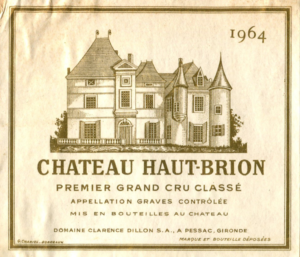
Silk, lace, and goldsmiths became more widely available during the Renaissance. Then in the 17th century (especially in France), the concept of luxury began to lose some of its negative connotations, as the degree of real wealth was increasing for everyone in society (as it still is, of course).
From the 18th century some brands who were focused on luxury products started to become more accessible to wider society, and brands used their logos to express their character and focus, with watch brand logos reflecting this evolution.
Luxuriousness as we now know it had a start in the late 19th Century, with Charles Frederick Worth in England, who had the idea of making “collections” of fashion, available for the different seasons, instead of making each piece only on request, as had been done before.

Luxury emerged more strongly in the Roaring Twenties (1920’s), as a reaction to the austerity just before that, when assembly lines and mass production made many more formerly luxury goods (like automobiles) easily accessible to most people in the developed world.
Luxury and social interactions.
Another significant factor in the current use of luxury goods as a status symbol arises from changes in society during the 20th Century, as described by the 1957 study “Family and Kinship in East London”. It focused on East London, a relatively poor area, where, typically, most of a person’s close relatives would live close by, often in the same street, and where everyone knew the other neighbors around.
They found that it was only when nuclear families were moved, by the government, out to new neighborhoods, where they were no longer surrounded by close family, that people suddenly started to want to buy more expensive cars and other status symbols to show how they were better than their new neighbors who were strangers. The concept of “Keeping up with the Joneses” arose in this era.
This can be seen as a transition from being obviously a member of a small group (extended family and well-known neighbors) to interacting with others more as an individual or nuclear family (just parents and their children). This makes sense from the concept of an individual continually negotiating their self-definition with strangers they come into contact with (to get it agreed upon), but not so much with people you already know well (because it’s already mostly agreed, with them).
The concept of luxury is still evolving, with a current emphasis on an emotional connection with luxury goods.
Luxury has always been about uniqueness and customization, such as selling items as limited editions or one-off pieces (as fine art is), offering bespoke options and personalization.
Our watches (which can be seen as art, more on that below) are available in different materials, and with bespoke options such as diamonds for the time-display elements:
The arts and individuality
As described above, societies have evolved from relatively few options, to having many more sub-culture options available.
This parallels the evolution of the Western Art Tradition, which has evolved, over the last thousand years, from simple symbolic relationships, through more and more complex symbolic relationships, to, in recent decades, letting go of using symbols and instead exploring the vastly more complex fractal nature of reality itself, which I detail in my blog post on what I consider to be the biggest revolution in the western art tradition.
An example of almost-abstract art, from the time when the revolution mentioned above was partly evident, when complete abstraction was not yet acceptable, is this Monet water lilies:
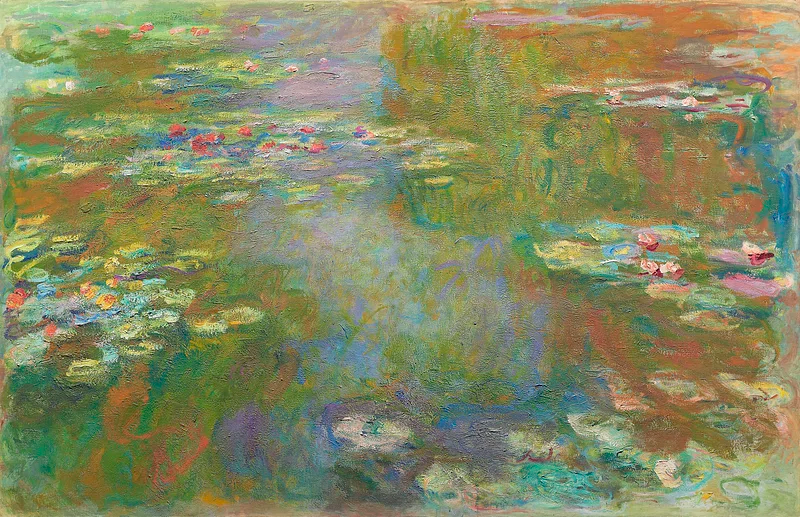
I have been fascinated by fractals (and fractal art) for many years. I remember looking at an oak tree (most natural things are fractal in nature) being fascinated about the way its fractal properties function to make it a unique individual oak tree, different from every other oak tree in the world, yet, at the same time, obviously an oak tree.

Where-as design can be done by committee, and often is (for fine jewelry, and most watches currently), the fine art process is done by an individual. While there have been some famous art collaborations, fine art is very much a personal exploration and expression.
Pieces of fine art are also fundamentally unique, unlike most design work (even before mass-production). Some artists do sell limited-edition prints of some of their work, but that doesn’t change the fact that a copy of the Mona Lisa can never be the Mona Lisa, even if it were such a good copy that most people looking at it could not distinguish between the two. Creation is very different from copying.
The concept of luxury only applies to things with a degree of functionality, so fundamentally cannot apply to fine art which is exclusively about aesthetics, even though fine art can have as much of a price differential as luxury goods, and the act of owning fine art can definitely be considered to be a luxury.
From fine jewelry to conceptual art jewelry.
The vast majority of jewelry in the world so far, is what’s now called fine jewelry (or fashion/costume jewelry which imitates it using less expensive materials), which emphasizes simple geometric shapes and smooth, polished surfaces, is valued for the materials it uses, and is design rather than art.
By contrast, art jewelry is part of the revolution in the Western Art Tradition, using natural forms, rough, sometimes broken, surfaces, and often incorporates materials of little value:
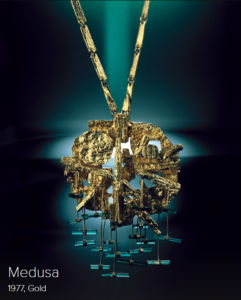
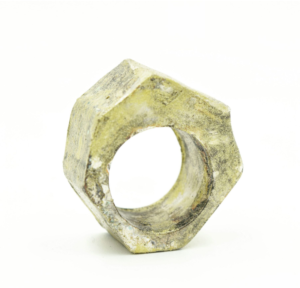
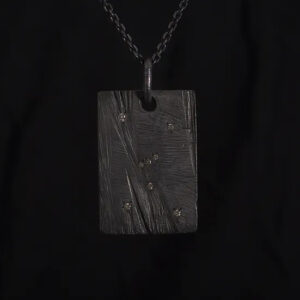
Conceptual art jewelry is created by an individual exploring and expressing their unique self. So it’s art rather than design, and valued as such.
For lots more examples of what I’d call conceptual art jewelry, see our Pinterest Board here.
I’ll explain how this relates to the future of the watch industry, below.
Uniqueness in the watch industry
While there are many revolutionary, unique, and creative watches available today, nearly all of them have almost no influence from anything other than mechanical design and fine jewelry, such as these beautiful examples of unusual watches:
Yet in the watch market there is an intense desire for innovation, individuality and uniqueness, and a rejection of mass-production, especially among relatively young microbrand enthusiasts, as well for collectors watches.
There is also the interesting subject of limited edition watches, which were originally about uniqueness, but are sometimes not so much about that any more. Here is my blog post where I investigate the good reasons for this love/hate relationship with limited-edition watches.
Microbrands allow the creative freedom and innovation which is rare in the big brands, and there is a resurgence of craftsmanship and artisans in this and other related industries.
Another way each individual watch can be unique is by using materials with unique visual patterns, such as some semi-precious stones, or the woods used in some organic watches. Uniqueness is just one of the many factors which enable one to answer the fascinating question “Are watches art?” Another factor being an increased focus on story and concept in watchmaking.
There are a few watch designs influenced by art jewelry, but, so far, it is usually a relatively minor influence as an addition to conventional watch design and components, even though there are watches being described as wearable art. More on the relationship between art jewelry and watchmaking, here. This is about to change . . .
UnconstrainedTime as a unique microbrand.
Because my influences (i.e. I am not a watchmaker), as the artist creating the initial UnconstrainedTime watch designs, they are very different from those of most watch designers, and our brand is very individual.
We are also a solo-founder startup, so there’s no compromise on our aesthetics.
We are arguably the first brand based on creativity which is fundamentally conceptual art jewelry (or fine art) . . .
Hence our slogan: “Celebrate your Uniqueness”
Our watches are very unique (and thus very collectible), as you can see for yourself:
For more details on that, and on other aspects of our brand, see this blog post on the UnconstrainedTime microbrand.
Why not get involved n the development of something unique and fascinating? . . . We welcome your comments and suggestions about our brand and watches. Comment below, on our other blog posts, or on our social media (links near the bottom of every page).
If you love unique watches, make sure you don’t miss our launch! . . . subscribe to our Priority List for updates on our 2024 launch, as well as for priority access to behind-the-scenes secrets about our brand.
So . . . what do you think of our watches? How unique do they seem to you?



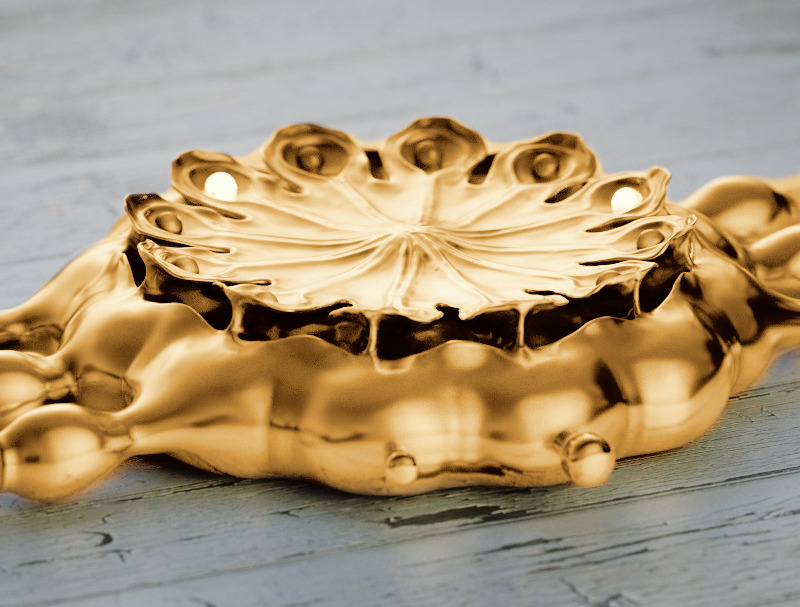
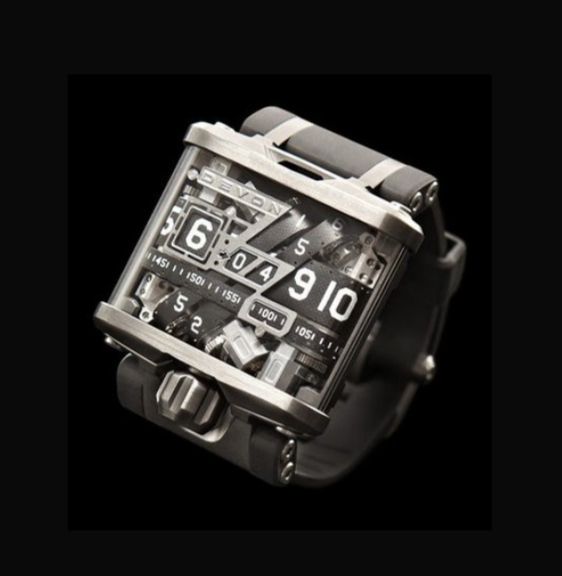
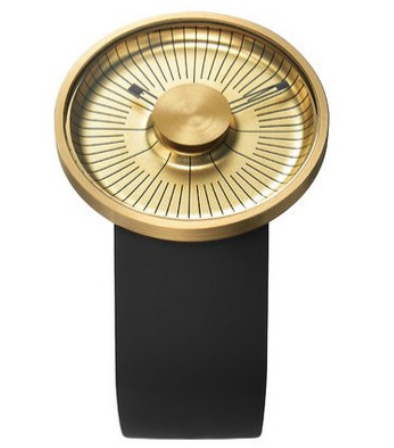


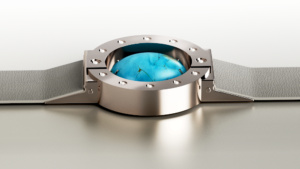



Leave a Reply